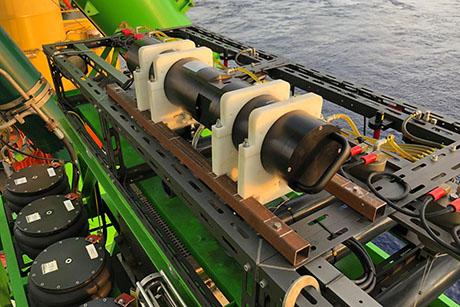Mission TULiP: A robotic pursuit on the Charles River
If you take a stroll past the MIT Sailing Pavilion on Memorial Drive, you may see, among the usual glut of sailboats on the Charles River, two red child-sized kayaks riding the waves. Instead of the 80-pound human they are each designed to hold, the kayaks carry an array of electronics and a pull along a string of plastic flags that flutter in the wind. One is named “Silvana,” the other “Nostromo,” and together they are following close behind “Icarus,” a motorboat. It is a mission of pursuit.
These baby kayaks star in robotic control systems research led by Franz Hover, associate professor of mechanical engineering at MIT and graduate student Brooks Reed and colleagues, which was just accepted into the International Symposium on Robotics Research (ISRR).
In the Hover Group’s workspace in the sailing pavilion, sheltered from the blaring sun, Reed is monitoring real-time data streaming in from the GPS mounted on the kayaks. He only has to glance to his right to see Silvana and Nostromo at work on the river.
Each of the kayaks tow an acoustic WHOI Micro-Modem, at a depth of about 1.5 meters. Icarus, the target vehicle, sends out a pulse of sound, called a “ranging ping.” Silvana and Nostromo receive it and calculate the the ping’s travel time. By dividing that number by the speed of sound in water, they can compute their own distances from Icarus. Then, they coordinate. Each swap their own location measurements and control actions by sending data packets to each other using the modems. And voila, the pursuers know where to go next. The pair achieve their joint goal of maintaining a tight triangular formation relative to the position of Icarus, tracking their target even as it turns in unpredictable loops.
Read the full article


